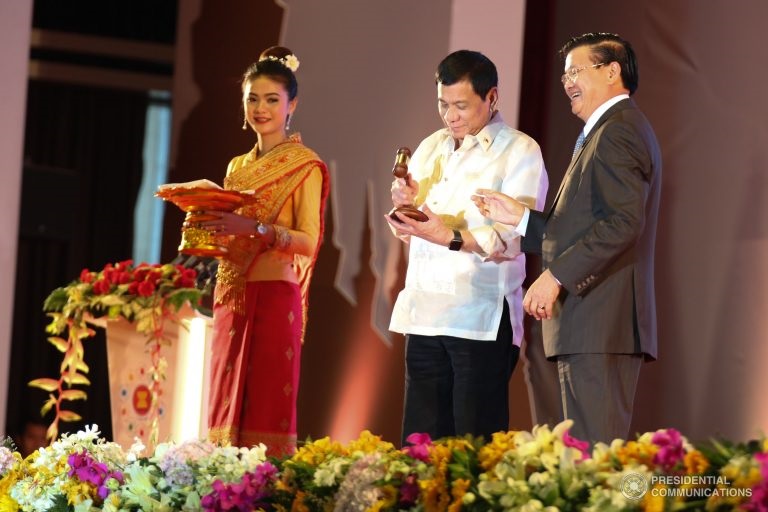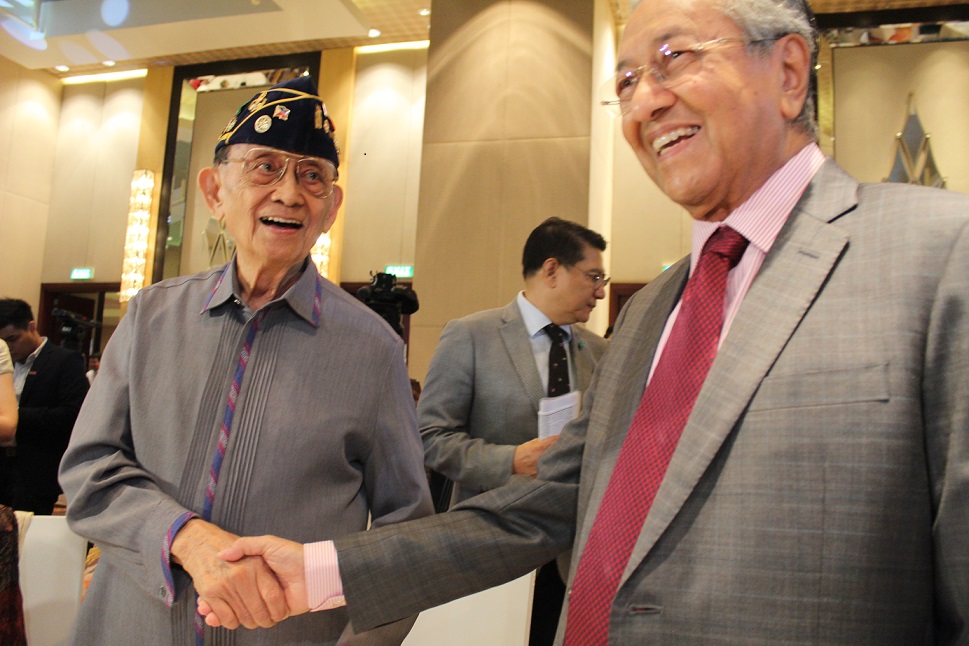BANGKOK (Reporting ASEAN) – It is now possible to go by car in any weather from Yangon (the commercial capital of Myanmar and formerly known as Rangoon) to Ho Chi Minh City (Vietnam’s commercial capital, formerly known as Saigon) by the East-West Economic Corridor and its southern extensions. The 2,000-kilometre plus route connects the five mainland Southeast Asian countries of Cambodia, Laos, Myanmar, Vietnam and Thailand, of which only the last is a founding member of ASEAN.

This trip is a journey into the past as well as the future of ASEAN, which turns 50 this year. Prior to the advent of 19th-century Western colonialism, the region was closely linked by complex social, economic cultural ties which could, and often were, disrupted by violent wars of domination.
Today, the Corridor, long segments of which follow ancient trading routes, is a vital component of the ASEAN’s vision of a unified community prospering from a huge internal market and acting as a globally competitive economic centre.
But there are at least three key hindrances to the widespread embrace of an ASEAN identity and the establishment of a genuine ASEAN community which, with very minor variations, are applicable to all newer ASEAN members that are commonly referred to as the ‘CLMV’ countries (Cambodia, Laos, Myanmar and Vietnam).
The first impediment is the lack of awareness about ASEAN among the general population. In some ways this is unsurprising, since more than half of the CLMV countries’ population live in relatively remote rural areas. The major economic activity in these areas is farming, about which the ASEAN Economic Community (AEC) has remarkably little to say.
For the residents of these areas, seasonal cycles of cultivation are significantly more relevant than annual ASEAN summits.
ASEAN events also need to vie for attention with local issues which are more immediate or have greater entertainment value. For instance, radio and TV shows on the AEC, which is the economic pillar of the larger ASEAN Community, are broadcast regularly in Myanmar. Yet despite a well patronized, wholly Burmese language website and the publicity surrounding the establishment of the Community slightly over a year ago, Myanmar, which joined ASEAN 20 years ago, has limited awareness of ASEAN.

This is also despite the existence of the technical means to distribute information efficiently and a free press. Internet usage has expanded from two per cent in 2014 to 39 per cent in 2016. Mobile phone penetration, which was just 7 per cent in 2011, is now close to ninety percent. Eighty per cent of new phone buyers opt for smart phones as they enact their own great leap forward in modern technology.
The very active social media, however, focuses more on the shenanigans of newly elected politicians or the antics of jilted wives caught on video rather than the ASEAN Community or even information about other ASEAN members. Major ASEAN stories such as transboundary haze or the South China Sea disputes do get coverage, but interest is not sustained since Myanmar, like most of the CLMV countries, is not directly affected by these.
A substantial proportion of the blame for lack of ASEAN awareness can be attributed to successive governments that have not invested much effort in explaining the emerging regional landscape and ASEAN to their own citizenry. But it is also an undeniable fact that the ASEAN story, as it is presented currently, competes for attention with great difficulty.
Limited enthusiasm for the AEC by the private sector and its weakness is a second set of hindrances to the creation of an ASEAN Community in Myanmar.
In general, there is some awareness of at least the basics of the AEC, at least in the major urban centers. This does not, however, prevent major companies from expressing the view that they are ‘not yet ready for the AEC’. From their perspective, increased competition from imported goods is challenging enough. But when that is to be shortly followed by increased competition in services and investments as well, enthusiasm for the AEC is significantly dampened.
Underlying this is the cold calculation of costs and benefits of regional cooperation across countries, as well as within them. Most private-sector companies in the CLMV countries are small and cater exclusively to a domestic or even local market.
For them, talk of a 650 million-strong unified market is largely irrelevant. For the larger firms, AEC means increased competition, uncertainty and adjustment costs. And even those few companies that are strong enough to take advantage of AEC opportunities may prefer non-ASEAN economic linkages for a variety of reasons including better access to world class technology, larger markets, difficulties in using AEC trade mechanisms and widespread persistence of non-tariff barriers within ASEAN.

If a centralised compensating mechanism or fund for firms adversely affected by the adjustment costs inherent in greater cooperation existed, or even if only public sector support were more forthcoming, private-sector perspectives on the AEC might improve. As it is, the costs of opening up economic borders are very real and immediate, while the benefits of cooperation, problematic and definitely further in the future.
A third hindrance to the speedy establishment of an ASEAN Economic Community with significant gains for all is the public sector’s limited capacity to lead and manage regional cooperation activities.
Governments and their administrative and managerial capacity play a key role in implementing investments that are high risk, have uncertain returns and a long gestation period. And ASEAN is, if not anything, a long-term collective venture in hope and prosperity.
Regional cooperation requires from each member country a clear vision and an economic strategy that achieves national economic objectives while being consistent with regionwide goals and aspirations. Public sector capacity to lead and manage change is however severely limited in many of the new ASEAN member countries, even without the added challenge of thinking regionally while acting locally.
Limited capacity in terms of skills, time and financial resources are therefore frequently allocated to more pressing domestic issues rather than regional concerns, for which there is no domestic political constituency.
Given that frequently, the key external economic relations of ASEAN countries are predominantly with a limited number of parties (such as Japan, China, the United States), policymakers may also, in actual practice, be less concerned about ASEAN and allocate resources accordingly.
The sheer number of regional cooperation programs that the CLMV countries are a party to are a further burden on limited government capabilities. Two annual summits and hosting or participating in some 1,200 meetings for ASEAN alone is almost overwhelming. To this must be added the summits, ministerial meetings and senior officials meetings of other programs.
Myanmar, for example, is involved in at least five other regional groupings involving East Asia and South Asia as well as Southeast Asia. And that is not counting the Regional Comprehensive Economic Partnership (RCEP), which looms on the horizon. Meaningful participation in deliberations, coordinating different programs and implementing agreements – all the while ensuring and safeguarding the well-being of national citizens – will be serious challenges in many of the newer ASEAN members for years to come.

The establishment of the ASEAN Economic Community underscores these challenges. Well-meaning observers frequently highlight the great differences in per capita incomes among member countries, the development divide, to ‘explain’ why it will be difficult for ASEAN to become a true community.
Actually, the fact that low-income Myanmar produces mostly rice while high-income Singapore makes sophisticated machinery is a manifestation of differences in comparative advantage, which in turn is the basis of international trade. In reality, the key hindrance to the establishment of an ASEAN Community is the lack of a broadly felt, simple yet clear and compelling reason for caring about this community.
Further, the case for a community must be convincingly made to the ordinary man and woman-in-the-street, as well as the private sector and the public sector representative. In a region that is highly stratified by ethnicity, historical experience and political systems, the overriding rationale for cooperation is likely to be, by default, economic self-interest – and a justified expectation of shared prosperity.
ASEAN’s challenge is that while the AEC is the linchpin of an ASEAN Community, it struggles to convince ‘everyman’ ASEAN that more open economic borders and greater foreign competition will lead to concrete improvements in daily lives. Until this fundamental challenge is squarely and thoroughly addressed by all member states, a genuine ASEAN Community will remain a perpetual work in progress.
*Myo Thant is chief economist with the Parami Roundtable Group based in Yangon, Myanmar. He worked with the Asian Development Bank for 27 years, specialising in regional economic cooperation, growth triangles and economic corridors. This piece is part of the Reporting ASEAN series.




